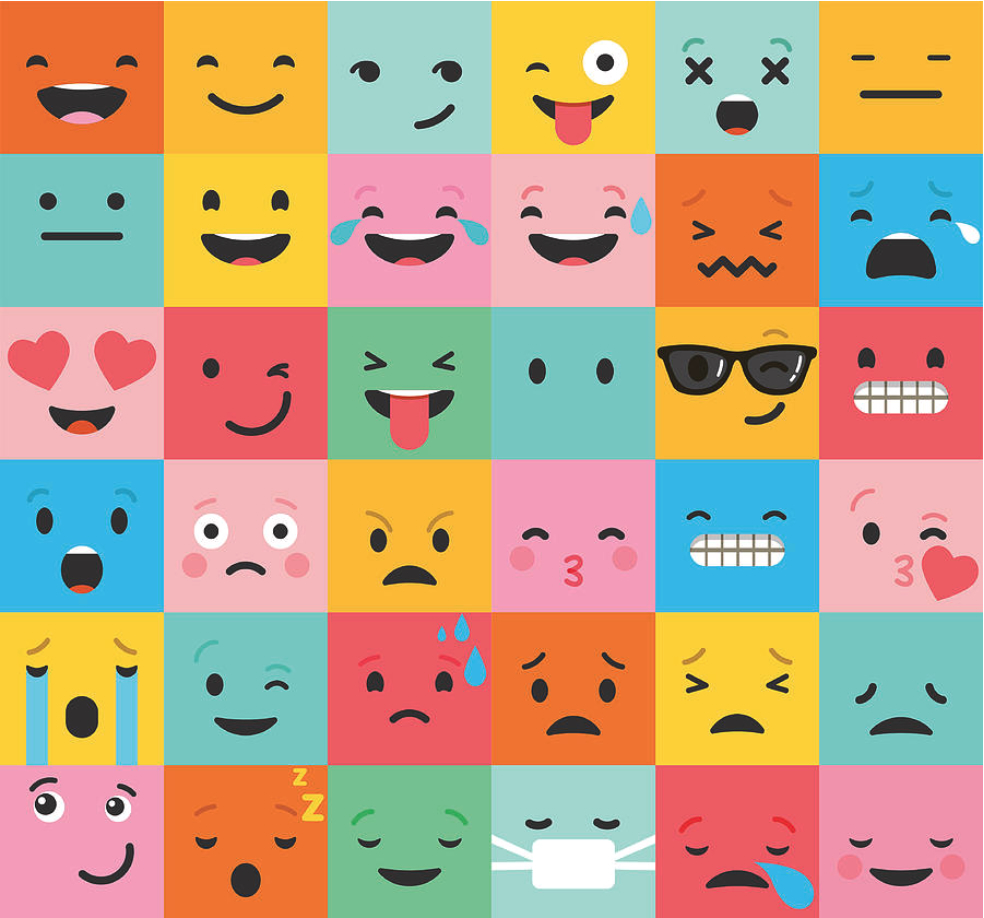4.4 Sociology of Emotions

What exactly are emotions, and how can we understand them sociologically? Sociologist Peggy Thoits (1989) provides one definition; she argues that emotions have four components (figure 4.9). First, there has to be some kind of situational stimulus. For example, someone could express something you dislike or discriminate against you based on one of your identities. Second, there is some physiological change or bodily sensation. Your breathing could change, or your heart rate might increase. Third, there is an expressive gesture. You might smile, frown, or move your body in a particular way. Finally, there is a label applied to at least one of the first three components. These labels can vary from society to society and group to group.
While sociologists tend to argue that emotions are socially constructed, some social scientists argue that every society has the same set of basic emotions. Specifically, positivists argue that people can universally identify fear, surprise, anger, disgust, sadness, and happiness. From this perspective, all other emotions are some combination of these basic emotions. Using pictures of people’s facial expressions, there is perhaps some evidence for this. Yet this narrow focus on facial expressions misses many nuances and cross-cultural differences in understanding and expressing emotions. Furthermore, it ignores how emotions can be connected to inequalities.
Emotion Work
Within social psychology, one influential concept in understanding emotion is emotion work, which entails either suppressing or evoking a particular emotion (Hochschild 1979). How often have you been in a situation where you felt something but were not allowed to express it? If you have worked a job that involved regular interaction with customers, you may have wanted to say or express something but couldn’t because of the informal or formal rules that were in place. In this instance, you may have been suppressing your emotions.
Alternatively, you may have found yourself in a situation where most people were expressing a particular emotion, but you were not. This may have led you to evoke the same emotion. For example, maybe you attended a wedding and felt ambivalence toward the couple or had other things going on in your life. But once you were at the celebration where everyone else was seemingly happy, you began to evoke the same emotion (figure 4.10).

There are a variety of ways to evoke or suppress an emotion. First, you can change what you are thinking. For instance, you could think happy thoughts or think sad thoughts. You can invoke an image that you relate to a particular emotion. Second, you can attempt to change bodily sensations. For example, you could alter your breathing. Third, you can change your expressive gestures. For instance, you could put on a smile or frown.
One part of managing emotions is regulating the language that we use (Schwalbe et al. 2000). Sometimes language can be used to gloss over decisions that end up hurting people. As an example, Cohn (1987) researched how intellectuals in the defense industry inhibit their emotions by using abstract and euphemistic language. They use terms such as “strikes” and “collateral damage,” when in actuality they are talking about decisions that end up killing people and putting people’s lives at risk. Often, this language use is highly gendered, with men dominating the U.S. national security apparatus. Any challenges to the language or wider expressions of emotions are dismissed as feminine (Cohn 2018).
Surface and Deep Acting
Sometimes there is a disconnect between what we are feeling and how we present ourselves. This is called surface acting. This is a change in body language, tone of voice, or facial expression, but not a change in feeling (Hochschild 2012). This might mean engaging in behavior that one feels to be false. It involves trying to act the part expected in a particular situation, even if it doesn’t match your underlying feeling. For example, while working you might put on a friendly smile for a customer who is getting on your nerves.
Other times you might engage in emotion work and end up feeling the emotion you want to express. This is called deep acting, an intentional, self-induced change in feeling itself (Hochschild 2012). You change your emotions to meet the expectations of the part you are playing in a situation. So you might put on a friendly demeanor for work even though your underlying mood is sour, but in doing so, you start to feel happy.
The management of emotions is closely tied to the existing inequalities within a society. Along the lines of gender and race, different emotions are seen as acceptable for different groups (Bonilla-Silva 2018; Wingfield 2010). As an example, people often expect men to express a limited range of emotions, such as those revolving around anger (Jackson and Wingfield 2013).
Licenses and Attributions for Sociology of Emotions
Open Content, Original
“Sociology of Emotions” by Matthew Gougherty is licensed under CC BY 4.0.
Open Content, Shared Previously
Figure 4.9. “Emotions Images” by Dan Baum is in the Public Domain, CC0 1.0.
Figure 4.10. “People Raising Wine Glass in Select Focus Photography” by Al Elmes is shared under the Unsplash License.
a group of people who live in a defined geographic area, interact with one another, and share a common culture.
any collection of at least two people who interact with some frequency and who share some sense of aligned identity.
the process of suppressing or evoking emotions.
a change in body language, tone of voice, or facial expression but not a change in feeling.
an intentional, self-induced change in feeling.
a person’s distinct identity that is developed through social interaction.
a term that refers to the behaviors, personal traits, and social positions that society attributes to being female or male
a category of identity that ascribes social, cultural, and political meaning and consequence to physical characteristics.

